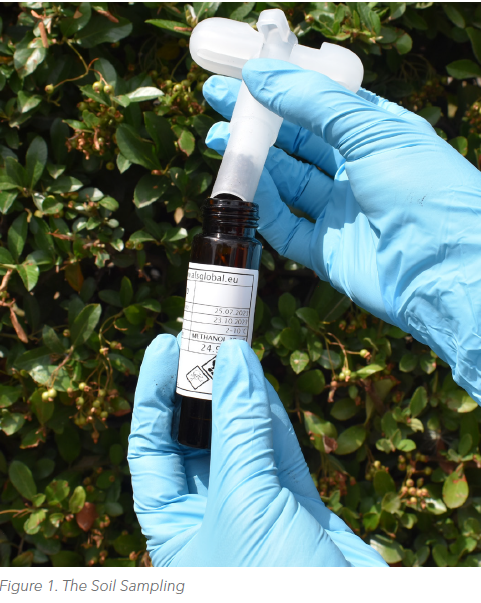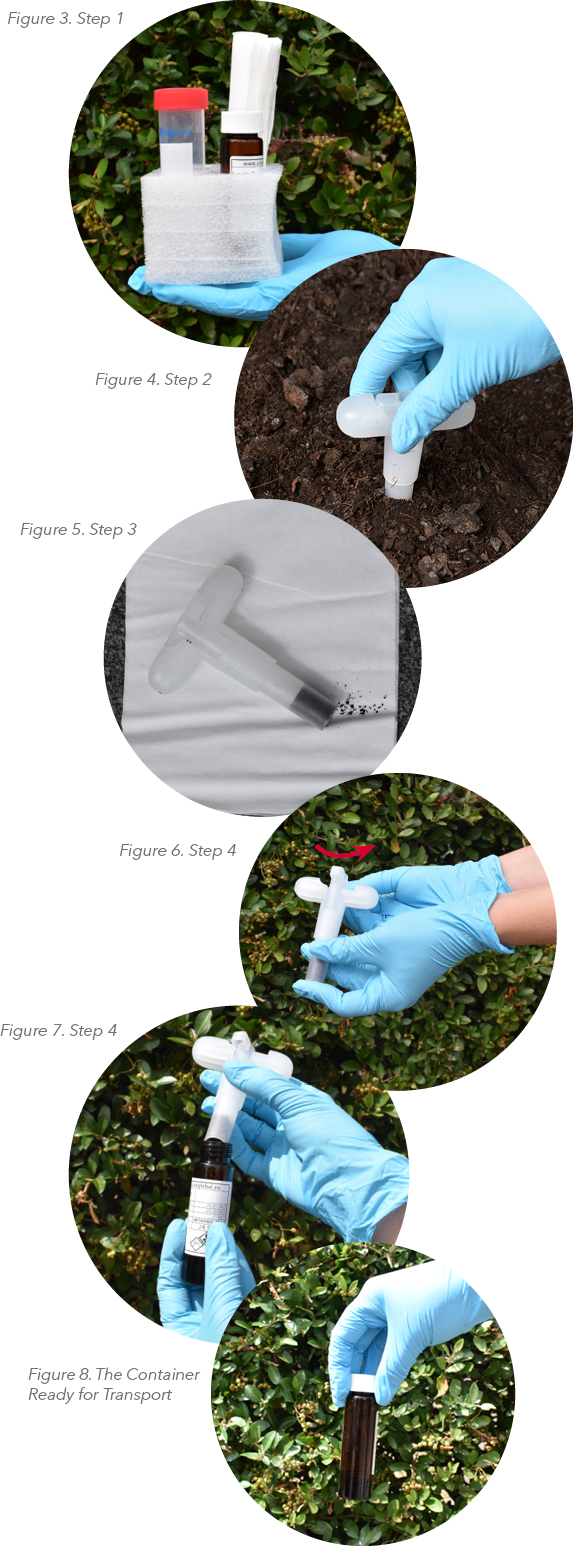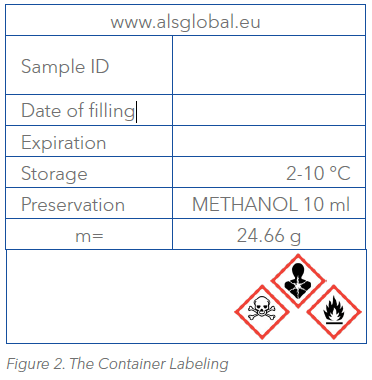Field MEthanol Preservation for VOCs in Soil: Sampling Technique & Best Practice
Published: July 2023
Download PDF
EnviroMail_06_Europe_Field Methanol Preservation for VOCs in Soil: Sampling Technique & Best Practice
Several published studies have established that classical soil sampling techniques with sample collection in soil jars can cause significant losses of Volatile Organic Compounds (VOCs) due to evaporative loss or biodegradation. As a result, field methanol preservation is now standard practice in Europe to analyze VOCs at low-limit levels.
Field Methanol Preservation Explained
Methanol is a water-miscible organic solvent that is very effective at extracting VOCs from soil. When methanol is added to soil at sufficient concentration, VOCs are stabilized in two ways. Evaporative loss is prevented by dissolution of VOCs in methanol in a vial with an air-tight seal, and microbial degradation is prevented because methanol acts as a bactericide, which is especially important for aromatics like BTEX (Benzene, Toluene, Ethylbenzene, and Xylenes), which can otherwise rapidly biodegrade.

Two challenges when using field methanol preservation are how to collect the correct amount of soil in the field and how to determine an accurate weight for the collected soil, without requiring a balance in the field. The first challenge is solved by the use of a specially designed disposable (recyclable) plastic coring device, which conveniently delivers ~ 5 grams (wet weight) of soil into the field methanol vial in a single plug.
The second challenge is accomplished by using pre-weighed vials (including label, cap, and methanol) that are pre-charged with exactly 5.0 mL of ultra-pure methanol. When methanol vials containing soil samples arrive at the lab, post-sampling weights are accurately measured and recorded, and the amount of wet soil in each vial is calculated by difference.
Soil moisture is determined from a separate soil jar (red-capped container), which allows the lab to calculate the dry weight of soil in the vial, as well as the volume of water (from soil moisture) that
contributes to the total methanol volume.
Key Quality Considerations in the Field
- Prior to use, store methanol vials at ambient or cool temperatures in a VOC-free environment (i.e. away from solvent or fuel vapours).
- Do not splash or spill any methanol during sampling, and ensure caps are tight after sampling with no soil in threads or on the seal. Methanol loss causes error in vial weight and VOC concentration calculations (the lab can identify vials with major leaks and will use alternate vials if available).
- Collect a representative, freshly exposed soil sample.
- Avoid adding extra labels to methanol vials, which add to vial weight and may obscure the recorded tare weight.
- Never store or ship soil samples that require testing for methanol in a cooler containing methanol preservatives
- Stability of methanol in vial prior to sampling is 90 days.
Optimal Sampling Technique
- Wear eye protection, gloves, and suitable clothing for incidental splash protection from methanol. Review Safety Data Sheet (SDS) for methanol prior to use. Replace gloves promptly if they contact methanol or potential contaminants.
- Within handling, do not cover the bar code and information about vial weight (it is used for the calculation of sample amount).
- Use the Terra Core Sampler to transfer approximately 5 g of soil to the 40 ml vial containing methanol and quickly close the vial with screw cap.
- The Terra Core Sampler is a disposable device. Do not use it for more than one sampling to avoid the cross-contamination.

Pull the sampling kit out of the plastic bag ready the 40ml ALS vial containing the methanol.
Step 2:
With the plunger seated in the handle, push the Terra Core Sampler into exposed soil until the sample chamber is filled. A filled chamber will deliver approximately 5 grams of soil.
Step 3:
Wipe soil from the outside of the Terra Core Sampler.
Step 4:
Rotate the plunger that was seated in the handle top 90° until it is aligned with the slots in the body. Place the mouth of the sampler into the 40ml ALS vial containing methanol and extrude the sample by pushing the plunger down. Quickly place the vial cap back on the vial. Do not fill vial with more than one content of the Terra Core Sampler.
Step 5:
Fill the red-capped container with the soil, this sample will be used for moisture testing.
Step 6:
Place all containers back into the white holder, put holder back to the plastic back, and
place into the ALS transfer bag with coolers. Keep samples at temperature 1 to 5°C before shipping to the ALS laboratories.


